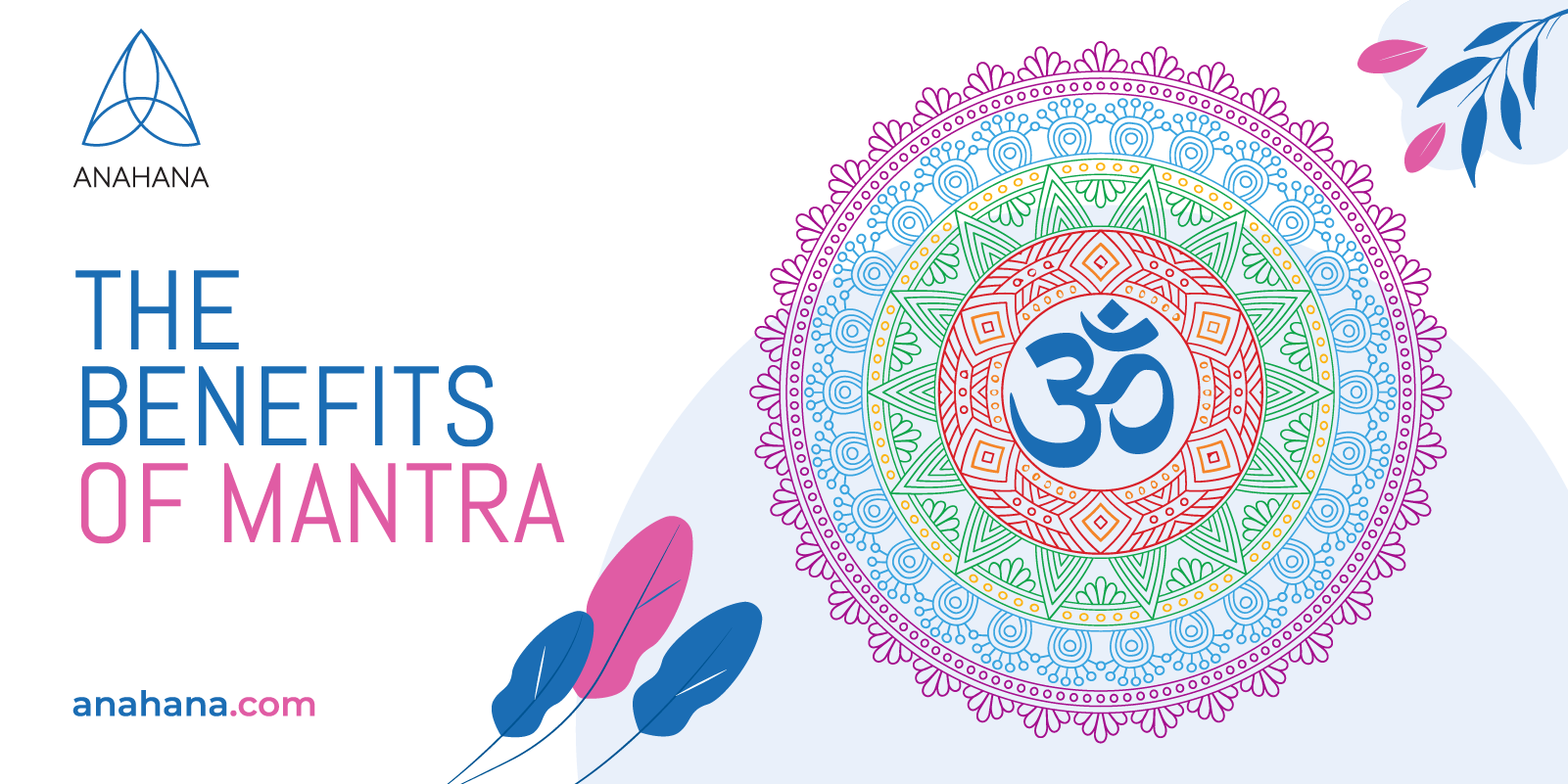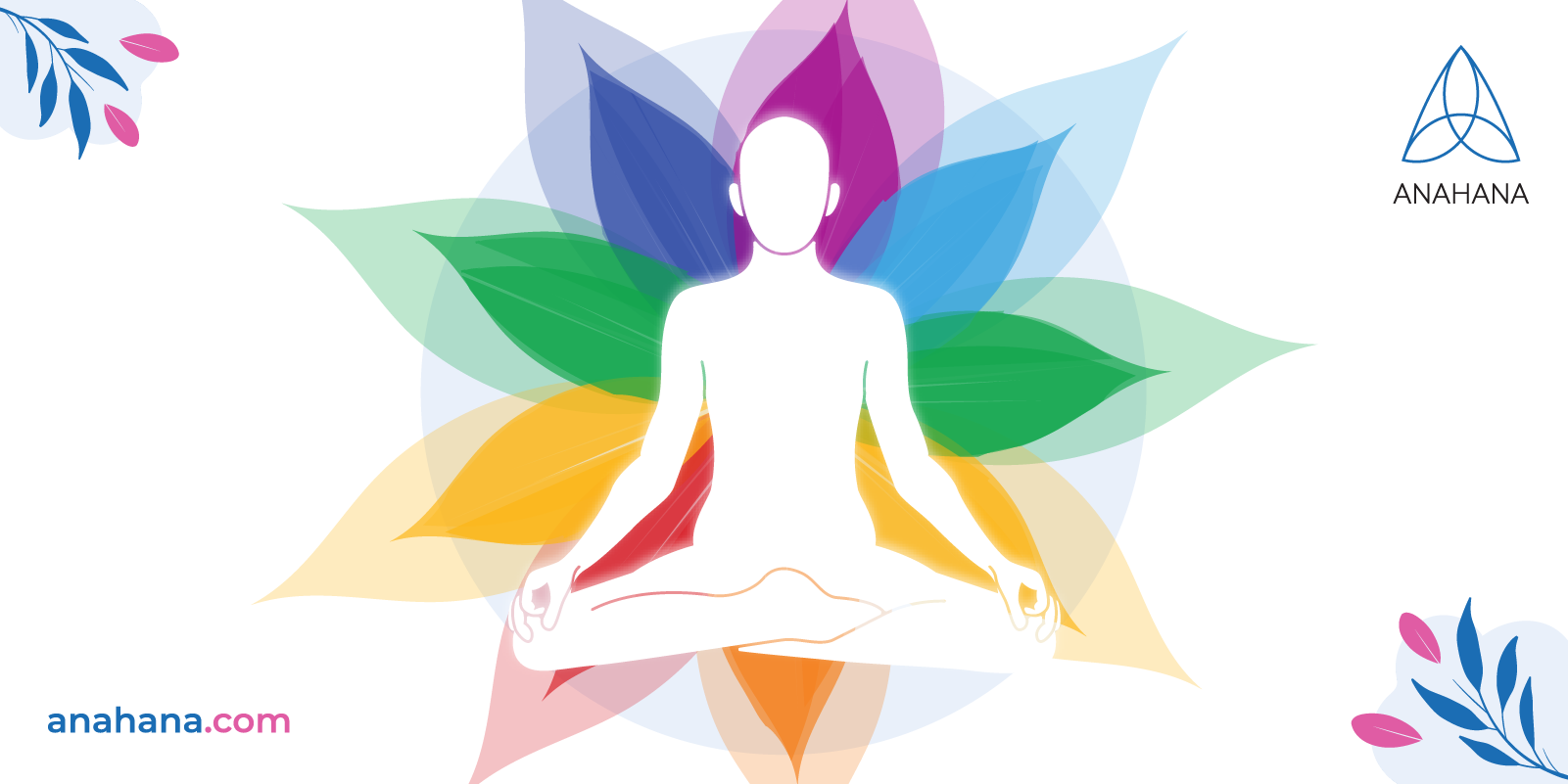
Table of Contents
Mantras, an ancient, sacred phrases that promote mental clarity, spiritual growth, and well-being through sound vibration and focused intention.
Mantra Definition
Mantras are not just spiritual tools; they are bridges that connect the consciousness with the universe.
This connection is facilitated through various types of mantras, each serving different purposes and traditions.
Understanding these types can help you choose the right mantra for your path, whether for meditation, healing, or spiritual awakening.
The Origin of Mantras
The origin of mantras traces back thousands of years, rooted in ancient religious traditions and spiritual practices.
These sacred words, or "word mantras," first appeared in the Vedas, the oldest scriptures of Hinduism, composed in Sanskrit. The word mantra itself is derived from Sanskrit, combining "man," meaning mind, and "tra," indicating tool or instrument—thus, a mantra is a tool for the mind, designed to help achieve a particular state of consciousness.
Mantra meditation, a core element of spiritual practice, involves the repetitive chanting or silent recitation of these sacred words to focus the mind, promote relaxation, and facilitate spiritual growth.
This practice has been integral to various religious traditions, including Hinduism, Buddhism, and Jainism, each incorporating mantras in unique ways to enhance prayer, meditation, and ritual ceremonies.
The power of the word mantra lies not just in its literal meaning but in its vibrational quality. Sanskrit mantras, regarded as the "sacred word," are believed to inherently carry spiritual energy that can be activated through chanting.
This ancient language's phonetic nature means that each sound is said to have a direct impact on the human psyche and physical body, making mantra practice a potent form of spiritual technology.
In Buddhism, the use of mantras became widespread with the advent of Mahayana Buddhism. Historical figures like the Buddha were said to impart specific mantras to followers as tools for liberation and enlightenment.
One Sanskrit mantra, "Om Mani Padme Hum," is among the most famous, embodying literally the essence of the Buddha's teachings.
Types of Mantras
There are several different types of mantras. Some of these include:
Bija Mantra
Bija Mantras, also known as seed mantras, are single-syllable sounds that hold within them the essence of a particular energy or deity.
These mantras are foundational sounds for creating spiritual vibrations and are often used in meditation and yoga practices to balance and align the chakras.
Each bija mantra corresponds to a specific chakra and helps in activating and harmonizing its energies. For example, "Lam" is the bija mantra for the root chakra, aiding in grounding and stability.
The Bija Mantras are also known as mantras for the chakras – the secven energy centers within the body. Chanting these mantras during chakra meditation stimulates and balances the chakras, promoting health, happiness, and spiritual well-being.
-
Root Chakra (Muladhara): "Lam" for grounding and stability.
-
Sacral Chakra (Svadhisthana): "Vam" for creativity and emotional balance.
-
Solar Plexus Chakra (Manipura): "Ram" for willpower and determination.
-
Heart Chakra (Anahata): "Yam" for love and compassion.
-
Throat Chakra (Vishuddha): "Ham" for communication and expression.
-
Third Eye Chakra (Ajna): "Om" for intuition and wisdom.
-
Crown Chakra (Sahasrara): "Ah" for spiritual connection and enlightenment.
Deity Mantra
Deity Mantras or Saguna Mantras are dedicated to particular deities, invoking their divine qualities and blessings.
These mantras are chanted with devotion and reverence, allowing you to form a spiritual connection with the deity. Each mantra embodies the essence of the deity it represents, helping devotees to embody those divine qualities themselves.
For example, "Om Namah Shivaya" is a one mantra that honors Lord Shiva, signifying purity, truth, and transformation.
Guru Mantra
Guru mantras are given to a disciple by their spiritual teacher, or guru. These mantras are personalized and hold a special significance in the disciple's spiritual journey.
The guru mantra is considered a profound tool for spiritual awakening and is often kept private, used for personal meditation and devotion.
Kirtan Mantra
Kirtan mantras are used in a form of devotional singing called Kirtan, which involves call-and-response chanting.
These mantras are typically longer and sung in groups. Kirtan allows for a communal expression of devotion and is an uplifting practice that can lead to states of joy and bliss. Popular kirtan mantras include the Hare Krishna mantra.
Mantras are more than just sounds or phrases; they are vibrations that carry the potential to transform lives. Through their repetition, one can tap into deeper states of consciousness, connect with divine energies, and manifest positive changes in the physical world.
The functions of mantras are as diverse as the mantras themselves, ranging from healing and protection to enlightenment and manifestation.
Mantras in Other Spiritual traditions
Mantras extend beyond their well-documented roots in Hinduism and Buddhism, permeating other spiritual traditions across the globe.
Their use, while varied, underscores a universal pursuit of inner peace, heightened consciousness, and spiritual connection through the power of sound vibration and focused intention.
In Sikhism, for instance, mantras take the form of hymns and prayers from the Guru Granth Sahib, the holy scripture.
Sikhs recite these mantras in both personal and communal settings, using them as a means to cultivate devotion, wisdom, and a sense of unity with the divine. The practice often involves the use of mala beads, similar to other traditions, to keep the mind focused and track the repetitions.
In modern spiritual movements, the concept of a "chosen mantra" or an "adjective mantra" reflects the personalized approach to this ancient practice.
People select mantras that resonate with their personal intentions or desired states of being, such as peace, love, or clarity. This bespoke approach allows for a deeper, more intimate connection with the mantra's energy and the specific qualities it embodies.
Functions of Mantras
Mantras serve various functions in spiritual practice, each enhancing your journey in unique ways. Their roles extend from personal healing to universal connection, showcasing the versatile power of these sacred sounds.
-
Focusing the Mind: Mantras help in concentrating the mind during meditation, reducing distractions and deepening the meditative state. This focus is essential for achieving clarity and insight.
-
Spiritual Awakening: The vibration of mantras can awaken the spiritual energy within, facilitating a deeper understanding of the self and the universe.
-
Emotional Healing: By chanting mantras, you can release emotional blockages, leading to healing and emotional stability.
-
Physical Well-being: The vibrational energy of mantras is believed to positively affect the physical body, supporting health and vitality.
-
Protection: Mantras create a vibrational shield around the you, offering protection from negative energies and influences.
-
Manifesting Desires: Through the focused intention behind mantra chanting, you can manifest their desires into reality, aligning your energy with your goals.
The profound impact of mantras on the mind, body, and spirit is a testament to their power and significance in spiritual practice.
Benefits of Mantras

Chanting mantras offers a multitude of benefits, from reducing stress and enhancing concentration to fostering spiritual growth and emotional healing. Here are some of the key advantages of incorporating mantra practice into your life:
-
Stress Reduction: Regular chanting of mantras can significantly lower stress levels, promoting relaxation and peace of mind.
-
Improved Concentration: Mantra practice enhances focus and concentration, making it easier to stay present and engaged in tasks.
-
Emotional Balance: The vibrational quality of mantras can help in balancing emotions, reducing anxiety, and elevating mood.
-
Spiritual Insight: Through the repetitive chanting of mantras, you can gain deeper spiritual insights and a heightened sense of connection to the divine.
-
Physical Health Benefits: The calming effect of mantra chanting on the mind also benefits the body, improving heart rate variability, reducing blood pressure, and supporting overall well-being.
Incorporating mantras into daily practice can be a powerful way to enhance life quality, providing a tool for dealing with the challenges of modern life with greater calm and resilience.
Whether seeking spiritual depth, mental clarity, or emotional healing, the ancient practice of mantra chanting offers a path to achieving those goals, supported by both tradition and science.
The Neurological Effects of Mantra on Your Brain
Scientific studies have begun to illuminate the transformative power of mantras on the human brain, showcasing their potential for enhancing mental and emotional well-being.
The consistent practice of mantra meditation can lead to significant changes in brain structure and function, offering a host of benefits:
-
Alters Brain Wave Patterns: Chanting mantras can shift the brain into a state of deep relaxation, marked by increased alpha and theta brain waves, which are associated with meditative and restorative states.
-
Enhances Neuroplasticity: The repetition of mantras can improve the brain's ability to form new neural connections, enhancing cognitive function, learning, and memory.
-
Reduces Activity in the Default Mode Network (DMN): Mantra chanting helps decrease activity in the DMN, which is involved in mind-wandering, self-referential thoughts, and the processing of past and future events, leading to a reduction in stress and anxiety.
-
Improves Emotional Regulation: By affecting the limbic system, the emotional center of the brain, chanting mantras can help in better regulating emotions, leading to enhanced emotional stability and resilience.
Most Popular Mantras

Among the vast array of mantras, certain ones stand out for their widespread use and profound impact. These mantras are celebrated for their ability to foster deep meditation, spiritual connection, and inner peace:
-
Om Namah Shivaya: A popular mantra from the Hindu tradition, it is dedicated to Lord Shiva, the aspect of the divine that is both the destroyer and the transformer. It is often used to cultivate inner peace, strength, and clarity. You can often come across this mantra in a yoga class.
-
Om So Hum: This mantra translates to "I am that," identifying you with the universe and all of creation. It is used for deep meditation, fostering a sense of unity and connection with all that exists.
-
Om: Considered the sound of the universe, "Om" represents the past, present, and future, encapsulating the essence of existence. It is used to harmonize the human energy with that of the universe.
-
Om Mani Padme Hum: Originating from Tibetan Buddhism, this mantra invokes the benevolent and compassionate energies of Avalokiteshvara, the Bodhisattva of Compassion. It is chanted for purifying the mind, easing suffering, and cultivating compassion.
These mantras, each with its unique vibration and significance, offer paths to various aspects of spiritual growth and well-being, resonating with people across cultural and spiritual traditions.
Mantras vs. Affirmations: What is the Difference?
While mantras and affirmations both involve the repetition of a phrase and specific phrases to influence the mind and behavior, they originate from different traditions and serve distinct purposes:
Mantras
-
Origin: Mantras have ancient roots in Hinduism and Buddhism, often composed in Sanskrit. They are spiritual or sacred phrases used in meditation and prayer.
-
Purpose: The primary purpose of mantras is to focus the mind during meditation, facilitate spiritual connection, and promote inner peace and enlightenment.
-
Practice: Mantra practice involves the repetitive chanting or silent recitation of sacred words, often as part of a broader spiritual or religious routine.
Affirmations
-
Origin: Affirmations are a more modern practice, typically framed in the native language. They are positive statements designed to challenge negative or unhelpful thoughts.
-
Purpose: The goal of affirmations is to influence the subconscious mind, foster positive thinking, and manifest changes in one's life and behavior.
-
Practice: Affirmations are repeated with the intention of embedding positive beliefs and achieving specific life goals, often without the religious or spiritual context of mantras.
Understanding the differences between mantras and affirmations can help you choose the practice that best aligns with your personal development and spiritual goals, utilizing the power of repetitive speech for transformation and growth.
How to Practice Mantras

Integrating mantras into your daily routine can transform your meditation practice and bring about profound changes in your life. Here’s a simple guide on how to practice mantras effectively:
-
Choose a Quiet Space: Find a peaceful spot where you can sit comfortably without distractions. This space should allow you to focus entirely on your mantra practice.
-
Set Your Intention: Before you begin, remind yourself of your intention for the mantra practice. Holding your intention in mind can amplify the effects of your chanting.
-
Adopt a Comfortable Posture: Sit in a comfortable position with your back straight. You can sit cross-legged on the floor or in a chair. The key is to maintain a posture that allows free flow of energy without discomfort.
-
Breathe Deeply: Start with a few deep breaths to center yourself. Deep, mindful breathing helps to calm the mind and prepare it for the practice ahead.
-
Begin Chanting: Chant your chosen mantra aloud or silently. You can use prayer beads (mala) to keep track of repetitions. Typically, mantras are repeated 108 times, but you can adjust the number based on your preference and time constraints. If chanting is not your cup of tea, know that mantras can be also repeated silently.
-
Focus on the Sound: As you chant, concentrate on the sound and vibration of the mantra. Allow the repetition to draw you deeper into meditation, keeping distractions at bay.
-
Close with Gratitude: After completing your repetitions, sit quietly for a few moments. Reflect on your practice and feel gratitude for the peace and clarity it brings.
Regular mantra practice can lead to a deeper meditation and yoga practice, increased focus, and a greater sense of peace and well-being. The key is consistency and allowing the mantra to penetrate deeply into your consciousness.
Frequently Asked Questions
Are longer mantras more powerful?
The power of a mantra is not necessarily determined by its length but by its meaning, the intention behind its use, and the belief of the practitioner.
Can mantras erase bad karma?
Mantras may not directly erase bad karma, but they can help you in creating positive mental states and intentions, which can influence your actions and their consequences.
Do mantras work the same way as affirmations?
Mantras and affirmations work similarly for you by reinforcing certain thoughts and intentions, but mantras often have spiritual or religious significance, while affirmations are usually secular and focused on personal goals or self-improvement.
References
https://en.wikipedia.org/wiki/Mantra
Mantra chanting benefits on the brain
The power of mantras and science behind it
Disclaimer
The contents of this article are provided for informational purposes only and are not intended to substitute for professional medical advice, diagnosis, or treatment. It is always recommended to consult with a qualified healthcare provider before making any health-related changes or if you have any questions or concerns about your health. Anahana is not liable for any errors, omissions, or consequences that may occur from using the information provided.

By: Meriah McCauley
Meriah McCauley is a leading voice in holistic healing, known across North America for her expertise in chakra balancing, spiritual alignment, and energy-based wellness. Her work bridges the art and science of mind-body healing, shaped through years of study, practice, and mentorship. Meriah deepened her understanding of spiritual anatomy and the chakra system under the guidance of her guru, Dr. Don Stapleton, during her immersive training in Costa Rica. She later earned her Master’s degree in Psychology from Columbia University, specializing in Spirituality and the Mind–Body connection, which continues to influence her integrative approach. Today, she supports individuals and practitioners through coaching, yoga teacher trainings, chakra-focused education, and Holotropic Breathwork for personal transformation. Meriah is dedicated to helping others develop emotional clarity, energetic balance, and spiritual resilience—and she remains committed to guiding anyone seeking a deeper, more meaningful connection with themselves.